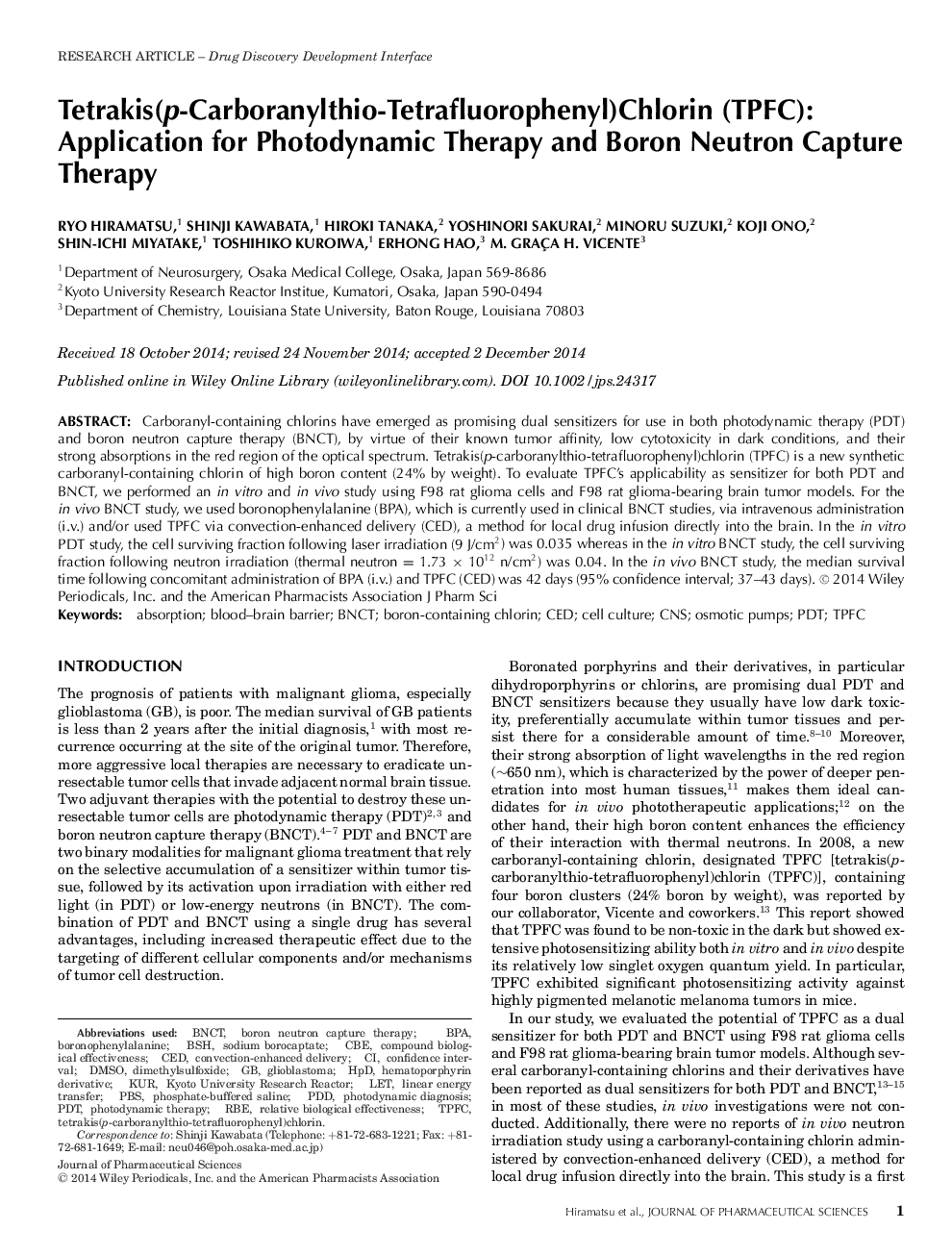| Article ID | Journal | Published Year | Pages | File Type |
|---|---|---|---|---|
| 10162056 | Journal of Pharmaceutical Sciences | 2015 | 9 Pages |
Abstract
Carboranyl-containing chlorins have emerged as promising dual sensitizers for use in both photodynamic therapy (PDT) and boron neutron capture therapy (BNCT), by virtue of their known tumor affinity, low cytotoxicity in dark conditions, and their strong absorptions in the red region of the optical spectrum. Tetrakis(p-carboranylthio-tetrafluorophenyl)chlorin (TPFC) is a new synthetic carboranyl-containing chlorin of high boron content (24% by weight). To evaluate TPFC's applicability as sensitizer for both PDT and BNCT, we performed an in vitro and in vivo study using F98 rat glioma cells and F98 rat glioma-bearing brain tumor models. For the in vivo BNCT study, we used boronophenylalanine (BPA), which is currently used in clinical BNCT studies, via intravenous administration (i.v.) and/or used TPFC via convection-enhanced delivery (CED), a method for local drug infusion directly into the brain. In the in vitro PDT study, the cell surviving fraction following laser irradiation (9 J/cm2) was 0.035 whereas in the in vitro BNCT study, the cell surviving fraction following neutron irradiation (thermal neutron = 1.73 Ã 1012 n/cm2) was 0.04. In the in vivo BNCT study, the median survival time following concomitant administration of BPA (i.v.) and TPFC (CED) was 42 days (95% confidence interval; 37-43 days). © 2014 Wiley Periodicals, Inc. and the American Pharmacists Association.
Related Topics
Health Sciences
Pharmacology, Toxicology and Pharmaceutical Science
Drug Discovery
Authors
Ryo Hiramatsu, Shinji Kawabata, Hiroki Tanaka, Yoshinori Sakurai, Minoru Suzuki, Koji Ono, Shin-Ichi Miyatake, Toshihiko Kuroiwa, Erhong Hao, M. Graça H. Vicente,
